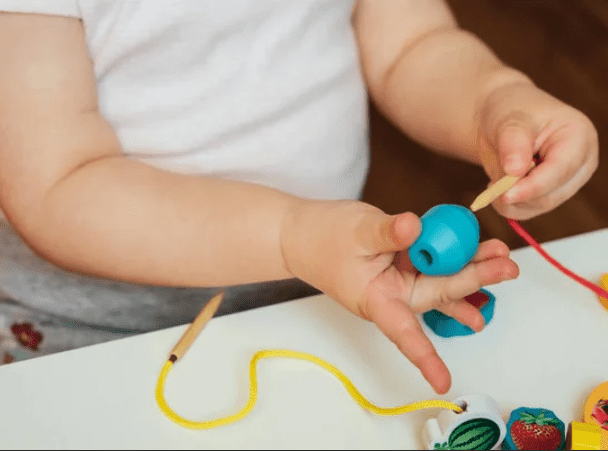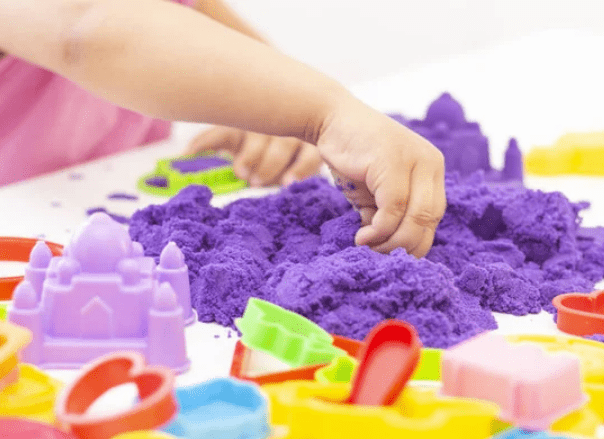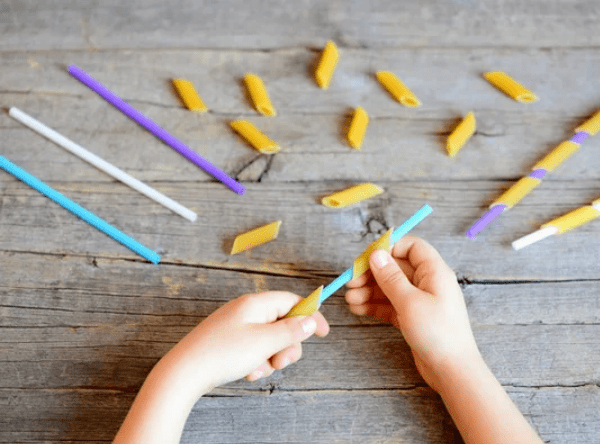
The Best Fine Motor Activities For Kids
Table of Contents
A range of fine motor activities for kids allow muscles to learn the correct way to work and to aid in day to day living. Learning how to utilise fine motor skills for kids is a starting block to help with future movement and development of their body and functioning with objects. There are an array of fine motor activities for kids to allow them to develop these skills and learn new tasks. Examples of fine motor skills can include how to hold your cutlery or learning how to tie your lace. These are daily tasks that are incredibly important, thus fine motor skills should be carefully attuned to make your child’s life easier.
What are Fine Motor Skills?
Fine motor skills are small movements that we use daily. Examples of fine motor skills include picking up smaller objects and using them. Eating yoghurt with a spoon is a fine motor skill activity as you are using the small muscles of the fingers, wrists, lips, and tongue. The opposite of fine motor skills is gross motor skills. These are the larger movements that allow for the finer motor skills to function. These include things like rolling over and sitting. They use larger muscles like your arms, legs, feet, and torso.
There are plenty of wonderful fine motor skills for kids that can be learned creatively, engaging your children and allowing them to perform daily functions unaided. Using fine motor skills for kids is incredibly important as you are teaching incredibly complex movements. Due to age, you have been using fine motor skills without realising for a significant period.
Your child doesn’t have that advantage. Breaking down these complexities and allowing the brain and the muscles to develop coordination is in an incredibly important part of physical and mental development. These are built on gross motor skills, but it is the finer motor skills that allow us and your child to have independence. With plenty of fine motor activities for kids, they’ll enjoy exercising these muscles in a controlled and creative fashion.

Examples of Fine Motor Skills: How to Move
As we have discerned, fine motor skills are the smaller muscle movements in the body, and there are plenty of examples of fine motor skills to help us understand how we can help our children best. These fine motor skills for kids could be using safety scissors, manipulating play-dough, opening and closing doors, using a computer mouse, holding cutlery, holding pencils and using them, getting dressed and dealing with buttons and zips, tying laces, building blocks into a house. The list is endless and there are plenty of opportunities to enjoy learning these skills with your children.
Allowing children to learn through fine motor activities provides them with a fun and creative way of learning tasks that will aid them as an adult, in a constructive and light environment. Honing in on fine motor skills allows for further advanced movement of smaller muscles and will give children confidence in their physical abilities.

Learning Through Play: Fine Motor Skills Materials
There are plenty of materials that aid with fine motor skills and make it easier for children to engage with their muscles. Using these materials can make it easier for your children to interact and perform daily activities. Buttons are great material for developing fine motor skills. Due to their small size, a lot of hand-eye coordination goes into making them easier to use. Learning to pick them up and becoming familiar with their shape is an act that children will be involved in as they grow older, so learning that finger strength is key.
Children love to play with play dough and this material is fun to make and a brilliant way to enhance fine motor skills. Learning to push the dough, kneading it with their hands and rolling it, all help develop their small hand muscles. Little craft pom poms are fantastic as they are tiny. This teaches small movements as children learn to pick them up and move them around. This is another example of fine motor skills that allow for hand-eye coordination.
A fun material to use is elastic bands. Stretching them and becoming familiar with rubber is a great way to exercise the muscles and build finger strength. Pipe cleaners and straws function as a means to practice bending and threading, skills that are incredibly useful for children. They can function with other materials like fabric and play dough as well. Paper clips are a great tool to teach manipulation and exercise finger muscles. It takes concentration to place paper together with paperclips, which is a fantastic use of fine motor skills.
Everyone loves stickers and they’re another great material to aid your children with fine motor skills. Try getting the children to peel the stickers off the sticker sheet. It is tricky not ripping the sheet and damaging the other stickers, and works as fantastic fine motor activity. Once the sticker is removed, hand-eye coordination is required to place it on the paper evenly.
Getting your children to practice with droppers or empty, non-needle syringes is another wonderful way to practice their fine motor skills. Get them to draw up some liquid and use their hand muscles to control what is released and in what time. This aids with small muscle function teaching muscle movements like grasping.

Fine Motor Activities For Kids
There are a variety of fine motor activities for kids that allow them to develop their hand-eye coordination and other motor skills. Developing these motor skills is key to daily activities and being able to perform necessary functions. Activities like pinching, threading, beading, balancing, cutting, buttoning, sorting, tracing, and painting are all activities that exercise fine motor skills. With plenty of options, you can start utilising your children’s motor skills immediately. Fine motor activities can incorporate daily functions to allow children to become well versed in the action and eventually to have the independence to do it themselves.
Stages of Fine Motor Development: A Journey of Tiny Triumphs
Fine motor skills, encompassing the coordinated movements of small muscle groups in the hands and fingers, are crucial for various activities children engage in as they grow. From grasping a rattle to writing their name, mastering these skills unlocks independence and boosts learning potential. Let’s explore the different stages of fine motor development in children, from infancy to early childhood:
Newborn to 3 Months:
- Reflexive grasp: Babies instinctively grasp objects placed in their palms.
- Reaching and swiping: They start to actively reach and swipe at objects within their visual field.
- Hand-to-mouth exploration: Everything goes in the mouth as they explore objects through touch and taste.
4-6 Months:
- Transfer between hands: Babies begin to transfer objects between their hands, demonstrating developing hand-eye coordination.
- Pincer grasp: They develop the pincer grasp, pinching objects between their thumb and index finger.
- Object exploration: They manipulate objects, banging, shaking, and bringing them together.
7-12 Months:
- Improved pincer grasp: The pincer grasp becomes more refined, allowing babies to pick up smaller objects.
- Intentional reaching: They can reach for specific objects and grasp them deliberately.
- Scribbling: Early attempts at scribbling emerge, demonstrating hand-eye coordination and finger control.
1-2 Years:
- Building and stacking: Children can stack blocks, demonstrating improved hand-eye coordination and spatial awareness.
- Turning pages: They start turning pages in books, showing fine motor control and developing early literacy skills.
- Self-feeding: They master using utensils and cups, gaining independence and dexterity.
2-3 Years:
- Drawing and coloring: Children start drawing recognizable shapes and lines, further developing hand-eye coordination and pencil control.
- Stringing beads: They can string beads onto a string, demonstrating improved finger dexterity and coordination.
- Zipping and buttoning: They begin manipulating zippers and buttons, gaining dressing independence.
3-4 Years:
- Using scissors: Children can use scissors with some assistance, developing finger strength and control.
- Printing letters: They start printing simple letters and shapes, indicating writing readiness.
- Opening containers: They independently open boxes and containers, exhibiting improved hand-eye coordination and strength.
4-5 Years:
- Writing simple words: Children write their names and familiar words, showcasing writing skills and letter recognition.
- Using tools: They can use tools like hammers and pencils with increased control and accuracy.
- Complex crafts: They engage in more intricate crafts like cutting intricate shapes or folding origami.
Building Tiny Skills, Big Benefits: Exploring the Advantages of Fine Motor Activities
Fine motor activities, often involving the coordinated movements of hands and fingers, are more than just fun playtime. Engaging in these activities offers a myriad of benefits that go far beyond entertainment, laying the foundation for essential skills and impacting various aspects of a child’s development. Let’s delve into some of the key advantages of incorporating fine motor activities into your child’s routine:
1. Boosting Hand-Eye Coordination: Imagine trying to thread a needle or write your name – it’s practically impossible without good hand-eye coordination! Fine motor activities like building with blocks, playing with puzzles, and using playdough train the eyes and hands to work together seamlessly. This enhanced coordination translates into smoother writing, improved athletic skills, and better hand-to-object manipulation in everyday tasks.
2. Sharpening Focus and Concentration: Ever notice how kids get laser-focused when engrossed in intricate beading or drawing? Fine motor activities require sustained attention and concentration on the task at hand. By practicing these skills, children develop their ability to filter out distractions and maintain focus for longer periods, benefiting them in academic settings and beyond.
3. Nurturing Problem-Solving Skills: Whether figuring out how to fit puzzle pieces together or mastering the art of using scissors, fine motor activities present mini-challenges that require thought and experimentation. As children work through these challenges, they develop problem-solving skills, learning to analyze situations, break down tasks, and persevere until they find solutions. This ability to think critically and creatively becomes invaluable throughout life.
4. Enhancing Self-Esteem and Confidence: Mastering new skills fosters a sense of accomplishment and boosts self-confidence. As children successfully navigate the challenges presented by fine motor activities, they develop a belief in their abilities and the courage to tackle new endeavors. This newfound confidence spills over into other areas of their lives, impacting their emotional well-being and encouraging them to explore and learn fearlessly.
5. Building a Foundation for Academic Success: Strong fine motor skills are directly linked to academic success, particularly in early childhood. The ability to hold a pencil comfortably, write legibly, and manipulate manipulatives in math activities are all rooted in strong fine motor development. By engaging in these activities early on, children build a strong foundation for future academic achievements.
6. Promoting Independence and Self-Care: As children develop their fine motor skills, they gain greater independence in performing daily tasks like dressing themselves, eating with utensils, and grooming themselves. This newfound independence fosters a sense of self-reliance and confidence, empowering them to manage their own needs and participate actively in their daily lives.
7. Providing Sensory Exploration and Learning: Many fine motor activities incorporate various textures, shapes, and materials, offering opportunities for sensory exploration. This multi-sensory engagement stimulates brain development and learning, enhancing cognitive skills and overall sensory processing.
Remember, the benefits of fine motor activities extend far beyond the physical realm. By incorporating these engaging and playful activities into your child’s routine, you’re not just building tiny skills, you’re paving the way for a future filled with confidence, independence, and a lifelong love of learning!
Age-Appropriate Fine Motor Activities: Building Tiny Skills through Play
Here’s a comprehensive list of age-appropriate fine motor activities for different age groups, along with specific examples and instructions:
Infants (0-12 months):
- Sensory Play:
- Texture Exploration: Offer safe, textured objects like crinkly fabrics, rattles made of different materials, and teething toys. Let them explore the textures with their hands and mouth.
- Water Play: Fill a shallow bin with water and safe objects like floating sponges or plastic cups. Encourage them to splash, pour, and scoop.
- Mirror Play: Prop up a baby-safe mirror and let them reach out and touch their reflection.
- Grasping and Reaching:
- Hanging Mobiles: Hang colorful mobiles within reach to encourage reaching and grasping.
- Tummy Time: Engage in regular tummy time, which strengthens upper body muscles and prepares them for future fine motor skills.
- Grasping Toys: Offer large, easy-to-grasp toys with different shapes and textures.
Toddlers (1-2 years):
- Building and Stacking:
- Blocks: Provide large, soft blocks for stacking and knocking down. Gradually introduce smaller, harder blocks as they develop.
- Cups and Nesting Toys: Use nesting cups of different sizes for stacking and sorting. Hide objects inside for them to uncover.
- Finger Painting and Scribbling:
- Sensory Paints: Mix edible ingredients like flour, water, and food coloring to create safe, sensory paint. Let them explore the textures and colors with their hands and fingers.
- Playdough: Offer playdough for squishing, molding, and creating shapes. Add cookie cutters or rolling pins for more challenge.
- Crayons and Markers: Provide easy-to-grip crayons or markers for scribbling and exploring colors on large paper.
- Threading and Sorting:
- Beading: Use large, chunky beads and string to create simple necklaces or bracelets.
- Sorting Toys: Offer a variety of toys in different shapes and colors and encourage them to sort them into containers.
- Pegboards: Use large pegboards with big pegs for them to push in and pull out, developing hand-eye coordination.
Preschoolers (3-4 years):
- Cutting and Construction:
- Blunt Scissors and Playdough: Introduce blunt scissors and playdough for practicing cutting skills. Help them snip playdough pieces or create simple shapes.
- Construction Paper and Glue: Provide construction paper, safe scissors, and glue sticks for making collages or simple crafts.
- Drawing and Coloring:
- Crayons, Markers, and Coloring Books: Introduce different types of crayons, markers, and coloring books with varying difficulty levels.
- Drawing Activities: Guide them through drawing simple shapes, lines, and faces to develop drawing skills.
- Complex Puzzles:
- Jigsaw Puzzles: Start with puzzles with 2-3 pieces and gradually increase the complexity as their skills develop.
- Peg Puzzles: Utilize peg puzzles with different shapes and sizes to challenge their problem-solving abilities.
- Pretend Play with Tools:
- Toy Tools: Provide safe toy tools like hammers, tongs, and playdough rollers to imitate real-life actions and improve hand movements.
- Pretend Scenarios: Encourage pretend play scenarios like building a house with toy tools or setting the table with utensils.
- Buttoning and Zipping:
- Large Buttons and Zippers: Encourage them to practice dressing independently with clothes that have large buttons and zippers.
Early Elementary (5-6 years):
- Writing and Tracing:
- Letter Tracing Worksheets: Introduce letter tracing worksheets with simple lines and shapes to prepare for formal writing.
- Journaling and Creative Writing: Provide kid-friendly journals and crayons for them to express themselves through writing.
- Arts and Crafts:
- Origami: Start with simple origami folds like airplanes or boats and gradually move on to more complex ones.
- Beading and Jewelry Making: Use small beads and string to create necklaces, bracelets, or keychains.
- Weaving: Introduce simple weaving techniques like paper weaving or yarn weaving to develop hand-eye coordination and creativity.
- Construction Sets:
- Legos and Building Blocks: Offer complex building sets with smaller pieces that require precise manipulation and spatial reasoning.
- Marble Runs and Straw Constructors: These sets encourage problem-solving and creativity while building intricate structures.
FAQ (Frequently Asked Questions)
Q: My child seems behind in their fine motor skills. What should I do?
A: Every child develops at their own pace. If you have concerns, consult a pediatrician or occupational therapist. They can assess your child’s development and recommend appropriate activities and therapies.
Q: How much fine motor activity does my child need each day?
A: There’s no set amount, but incorporating fine motor activities naturally throughout your child’s day is ideal. Playtime, mealtimes, and even getting dressed offer opportunities for skill development.
Q: Are there any activities I should avoid?
A: Activities involving small objects or sharp tools should be carefully supervised for young children. Choose age-appropriate materials and prioritize safety over complexity.
Q: I’m not creative. Can I still help my child develop fine motor skills?
A: Absolutely! Many activities require minimal creativity. Focus on providing opportunities for exploration, play, and practice. Even basic tasks like building with blocks or sorting toys can be beneficial.
Q: Where can I find more resources for fine motor activities?
A: Websites like Pinterest, blogs dedicated to child development, and libraries offer a wealth of ideas and printable resources.
Conclusion
Fine motor skills play a crucial role in a child’s development, impacting everything from learning to self-care. By incorporating engaging and age-appropriate activities into their daily lives, you can nurture these skills and empower your child to navigate the world with confidence and dexterity. Remember, the key is to make it fun, focus on progress, and celebrate their achievements along the way. Enjoy the journey and witness the joy of learning and growing through tiny triumphs!


Leave a Reply